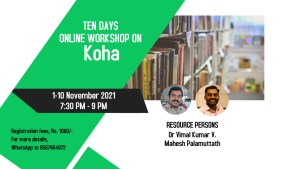Up to an era products or few companies were called brands but It has been changed now. each person becomes each brand in this time.
The importance of personal branding is very huge in this era. that’s why I’m discussing Personal Branding in this blogpost
What is Personal Branding?
Who does need Personal Branding?
How do a person can create Personal Branding?
What is Personal Branding?
Simply, personal branding is nothing but how do you promote yourself. It is the conscious and intensional effort to create, influence the public perception of an individual.
Perception and Promise are the two “P”s in personal branding. what does perception mean? and what does promise mean?
Perception is the picture in the minds of others regarding you and your brand. whereas promises are the things that you offer to your audience. This can be any service or products etc.
Who does need Personal Branding?
It is important to have a personal brand for each and every person in this era. It doesn’t matter whether you are a professional, businessman, or an artist. by creating a personal brand you will mainly get the following three benefits.
Position yourself: you will be able to create a position of yourself in your professional space.
Demonstrate your knowledge and skills: with a personal brand you can showcase your skills and knowledge
Improve visibility and reputation: by creating a personal brand, you can extend your visibility and reputation in your professional field
before creating a personal brand, you need to realize the current level of you, in order to realize the level, the following factors can be taken into consideration.
Internal expert: you need to be an expert in your workspace, expert in the sense of trying and reaching into new experiments. and you should also reveal your expertise outside of your workspace.
Be a local hero: that means, it is the developing stage of being an expert or brand within your local region, district, or even state.
Become a national-level player: It is simply, perceptualizing your brand among the minds of people throughout a nation.
the last one is, Becoming a global star: here you familiarise your brand to the entire world.
How do we develop personal branding?
A personal brand needs to be constructed so that it is easily articulated in an online environment, as well as clearly communicated verbally.
Start thinking of yourself as brand
You are already done when you started thinking of yourself as a brand. nobody will pull you out to do it. so start by yourself.
Make a brand image
Be ready to create an image that depicts you and your services. in order to create a brand image, the following questions can be answered.
Who am I?
What can I offer?
Why am I here?
Who am I?: here you decide the name, that should be branded in the minds of others. It should also show what are the unique things that can have the clients/audience from you.
eg: my brand name is Mahesh Palamuttath and my tagline is Linux, FOSS, and Library Technologist. my tagline reveals in what fields I am expert
What can I offer?: here you must showcase your skills and expertise and should have the details of your services with previous pieces of evidence and testimonials from clients/brand viewers.
Why am I here?: here you define the purpose and goals of having a personal brand.
Network and reach people
You should have a clearcut idea about your brand viewers/audience, that can either be co-professionals and you should never ever miss any programs with your audience. the programs can be either workshops/seminars/conclaves, etc. these events will definitely help you to improve your personal branding.
Keep the circle of brand lovers
You should love and maintain the circle of your brand viewers, these can be easily done through creating broadcast channels in instant messaging like WhatsApp/Telegram or even in a blogpost. that circle will enlarge the fame of your personal branding. they may start following you referring you to others etc.
Explore the possibilities of the Internet
You know that internet is the biggest leverage in this era. so internet and other allied social media have to be utilized for enhancing your personal brand.
One more necessary thing for creating a personal brand is that, having a website for yourself. that must include who you are? your bio, activities you participated in, services you offer, testimonials by clients/brand viewers, logo if any, and the tagline.
Along with a personal website, it is better to start a blog where you can write something that is related to your brand/interest. you can use even youtube channels, Linked In, Twitter, Facebook pages, etc, for the same purposes as free.
Thank you
— Mahesh Palamuttath




